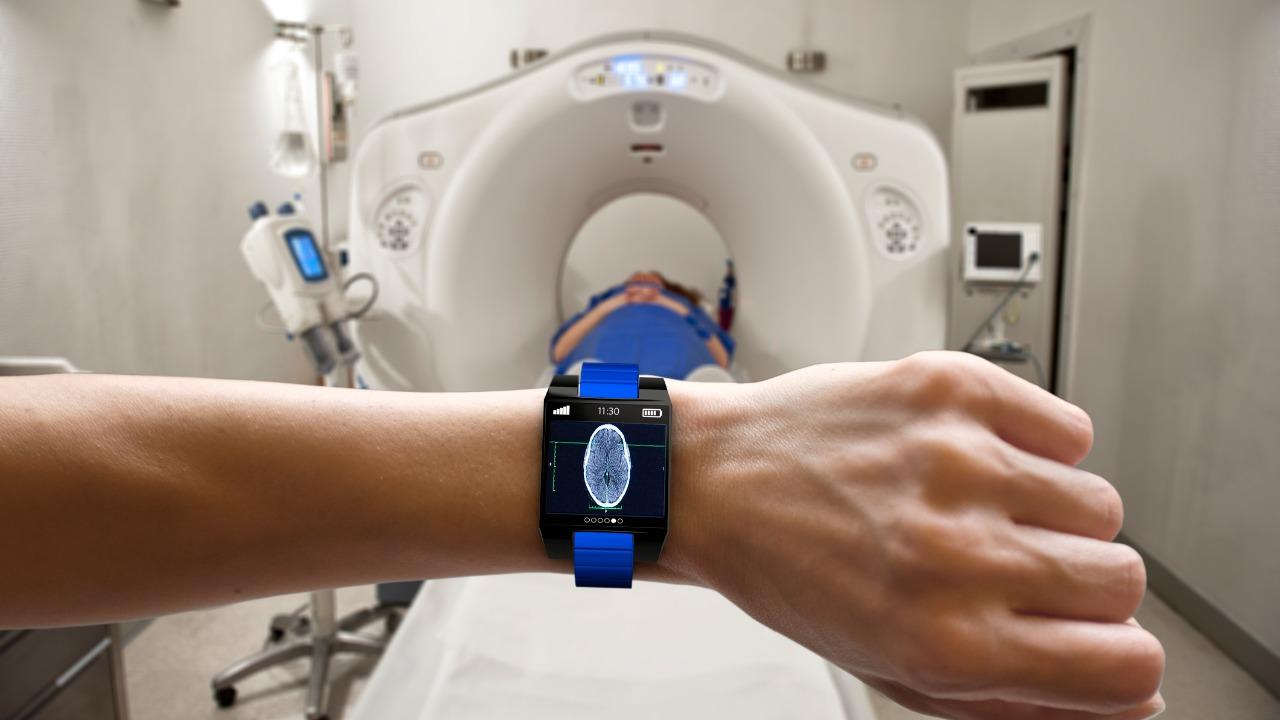Fear and trepidation. That’s what many of us experience when it comes to our health. The slightest anomaly, the tiniest ache, sends shivers down our spines. We seek answers, reassurance, and guidance. And now, in the age of ever-advancing technology, a new ally has emerged in the fight for our well-being: wearable medical apps.
Imagine having a personal health assistant at your fingertips, 24/7. A device that not only tracks your vital signs but also provides insights into your overall health and well-being. This is the promise of wearable medical apps, a remarkable fusion of cutting-edge technology and the age-old pursuit of good health.
In this article, we delve into the fascinating world of wearable medical apps and their evolution. We’ll explore how these apps have emerged as a beacon of hope for individuals seeking to take control of their health. So buckle up, dear reader, as we embark on a journey that will leave you enlightened and inspired.
The Emergence of Wearable Medical Apps
In the not-so-distant past, monitoring one’s health was limited to sporadic visits to the doctor or relying on bulky medical equipment found only in clinical settings. But then came a revolution—a technological uprising that propelled us into a new era of health monitoring: the era of wearable medical apps.
The rise of smartphones and the advancement of sensor technology paved the way for the development of these extraordinary apps. With a simple tap on a screen and a few strategically placed sensors, individuals could now monitor their vital signs, track their physical activity, and gain valuable insights into their overall well-being.
But it wasn’t just the technology that fueled the emergence of wearable medical apps. It was the growing awareness of the importance of proactive health management. People were no longer content with merely treating illnesses; they wanted to prevent them. They craved knowledge and control over their own bodies, and wearable medical apps became the conduit to this newfound empowerment.
As the demand for these apps grew, so did the market. Tech giants and startups alike recognized the immense potential and began investing in research and development. Soon, an array of wearable devices flooded the market, each accompanied by its own medical app, promising to revolutionize how we approach our health.
The medical app landscape evolved rapidly. From heart rate monitors and pedometers, the range expanded to include sleep trackers, stress management tools, and even apps capable of monitoring chronic conditions like diabetes and asthma. The possibilities seemed endless, and with each passing day, wearable medical apps became an integral part of our lives.
But it wasn’t just the functionalities that captivated users. The intuitive designs and user-friendly interfaces played a significant role in their widespread adoption. Suddenly, health monitoring wasn’t reserved for the technologically savvy; it became accessible to everyone. And with this accessibility came a wave of possibilities—possibilities that would shape the future of healthcare as we know it.
As we venture deeper into the realm of wearable medical apps, we will explore the key features and functionalities that have made them indispensable companions in our quest for good health. So fasten your seatbelts and prepare for a journey that will leave you in awe of the advancements and potential that lie ahead. The era of wearable medical apps has only just begun, and the possibilities are truly mind-boggling.
Key Features and Functionalities of Medical Apps
To truly appreciate the transformative power of wearable medical apps, one must understand their key features and functionalities. These apps are not mere novelties; they are sophisticated tools that harness the potential of technology to provide valuable insights and support for individuals seeking to monitor their health.
One of the primary functionalities of medical apps is the collection and analysis of health data. Through a combination of sensors and algorithms, these apps can track vital signs such as heart rate, blood pressure, and sleep patterns. They provide real-time data that allows users to monitor their well-being and identify any irregularities or trends that may require attention.
But it doesn’t stop there. These apps go beyond basic data collection. They offer comprehensive analysis and interpretation of the gathered information, presenting it in a meaningful and actionable format. Users can visualize their health trends, set goals, and receive personalized recommendations for improving their well-being.
User-friendly interfaces and intuitive designs are another hallmark of effective medical apps. Recognizing the diverse user base, developers have prioritized simplicity and ease of use. Navigating through these apps is a breeze, with intuitive menus, clear visualizations, and concise explanations. This ensures that users, regardless of their technological expertise, can seamlessly integrate these apps into their daily lives.
Furthermore, many medical apps offer integration with other devices and platforms. They can synchronize with smartwatches, fitness trackers, and even electronic medical records, creating a unified ecosystem of health data. This integration allows for a holistic approach to health monitoring, enabling users to track their activity levels, sleep patterns, and medical history all in one place.
The Advantages of Wearable Medical Apps
The advantages offered by wearable medical apps are truly remarkable, making them indispensable tools for individuals striving to take control of their health and well-being.
First and foremost, these apps empower individuals to become proactive participants in their own healthcare. Gone are the days of relying solely on periodic doctor visits or reactive interventions. Wearable medical apps provide real-time feedback, enabling users to identify potential health issues early on. This early detection can lead to timely interventions, potentially preventing the progression of certain conditions and improving health outcomes.
Convenience is another significant advantage. With wearable medical apps, health monitoring becomes seamless and integrated into daily life. No longer do individuals need to make time-consuming appointments or travel to medical facilities for routine check-ups. Instead, they have a comprehensive health monitoring system at their fingertips, accessible anytime, anywhere. This convenience encourages consistency and empowers users to make informed decisions about their health on a daily basis.
Furthermore, wearable medical apps can facilitate remote monitoring and telemedicine. In situations where physical access to healthcare professionals is limited or impractical, these apps bridge the gap, allowing for remote consultations and monitoring. This is particularly crucial in rural or underserved areas where access to healthcare services may be limited. Wearable medical apps can bring healthcare expertise to individuals who would otherwise face significant barriers.
The benefits of wearable medical apps extend beyond individuals. They also hold tremendous potential for public health initiatives. Aggregated data from large user bases can provide invaluable insights into population health trends, enabling researchers and healthcare authorities to identify patterns and implement targeted interventions. This data-driven approach to public health has the potential to revolutionize healthcare systems and improve the overall well-being of communities.
As we continue our exploration of wearable medical apps, we will delve into the challenges and considerations associated with their development. The road ahead is not without obstacles, but with each challenge comes an opportunity for innovation and progress. So strap in, dear reader, as we navigate through the intricacies of creating these remarkable tools for the betterment of humanity.
Challenges and Considerations in Developing Medical Apps
While wearable medical apps hold tremendous promise, their development is not without challenges and considerations. As these apps deal with sensitive health data and have the potential to impact individuals’ well-being, several crucial factors must be taken into account.
One of the primary considerations is the regulatory and legal landscape surrounding medical app development. Health-related apps are subject to various regulations, depending on the region. Developers must navigate through complex frameworks such as the Health Insurance Portability and Accountability Act (HIPAA) in the United States or the General Data Protection Regulation (GDPR) in the European Union. Compliance with these regulations ensures the privacy and security of users’ health data, establishing trust and confidence in the app’s usage.
Speaking of privacy and security, these concerns loom large in the realm of wearable medical apps. The sensitivity of health data necessitates robust security measures to protect against unauthorized access or breaches. Encryption, secure data storage, and stringent access controls are essential components of any medical app’s development. Additionally, developers must prioritize transparency in their data handling practices, ensuring that users are fully aware of how their data is collected, stored, and utilized.
User trust is a critical factor in the success of wearable medical apps. Individuals need to feel confident that the data they provide is secure and that the app’s recommendations are reliable. Developers must be transparent in their communication with users, providing clear explanations of how the app functions and the limitations of its capabilities. Building trust requires a commitment to ethical practices and an ongoing commitment to user privacy and security.
Usability and accessibility are additional challenges to consider. Medical apps must be designed with a wide range of users in mind, including those with varying levels of technological proficiency or physical limitations. User interfaces should be intuitive, inclusive, and easy to navigate, ensuring that individuals of all backgrounds can effectively utilize the app’s functionalities. This consideration also extends to individuals with disabilities, who may require additional support or accommodations in using the app.
As developers tackle these challenges, they are also keeping a keen eye on the future of wearable medical apps.
The Future of Wearable Medical Apps
The future of wearable medical apps is an exciting and ever-evolving landscape. As technology continues to advance, these apps are poised to become even more powerful, personalized, and transformative in improving healthcare outcomes.
One of the key trends on the horizon is the integration of artificial intelligence (AI) and machine learning (ML) into wearable medical apps. By leveraging AI and ML algorithms, these apps can analyze vast amounts of data and provide personalized insights and recommendations tailored to each individual’s unique health profile. This level of customization has the potential to revolutionize healthcare, enabling proactive interventions and personalized treatment plans.
Another area of exploration is the incorporation of additional biometric sensors into wearable devices. While current devices primarily focus on monitoring vital signs, future iterations may integrate sensors capable of detecting more nuanced health markers. This could include monitoring biomarkers in sweat, analyzing DNA sequences, or even assessing mental health indicators. By expanding the range of data collected, wearable medical apps can provide a more comprehensive picture of an individual’s health, enabling earlier detection of health issues and more precise interventions.
Furthermore, wearable medical apps are moving beyond mere monitoring and stepping into the realm of active intervention. For instance, apps can provide personalized exercise routines, offer medication reminders, or guide individuals through stress reduction techniques. These interactive features transform wearable devices from passive trackers to active companions in an individual’s health journey.
Personalized healthcare is at the forefront of wearable medical app development. As technology advances, the apps will continue to evolve, becoming more integrated with the individual’s overall healthcare experience. They will seamlessly connect with electronic health records, provide real-time updates to healthcare professionals, and facilitate remote consultations. This integration will foster a collaborative approach to healthcare, empowering individuals and enabling healthcare providers to deliver more targeted, efficient, and personalized care.
In conclusion, wearable medical apps are poised to revolutionize the healthcare landscape. With their advanced functionalities, convenience, and potential for personalized care, these apps empower individuals to take charge of their health and well-being. However, as development continues, it is crucial to address challenges related to regulation, privacy, security, and user trust. By navigating these obstacles and embracing the possibilities of AI, ML, and advanced biometric sensors, wearable medical apps hold the potential to usher in a new era of proactive, personalized healthcare solutions.
And for those seeking a reputable software development firm to build a medical app, look no further than New York Software Developers. With their expertise, commitment to compliance, and dedication to user-centric design, they are well-equipped to bring your vision of a wearable medical app to life. Trust New York Software Developers to transform your ideas into reality and embark on a journey towards a healthier future.




